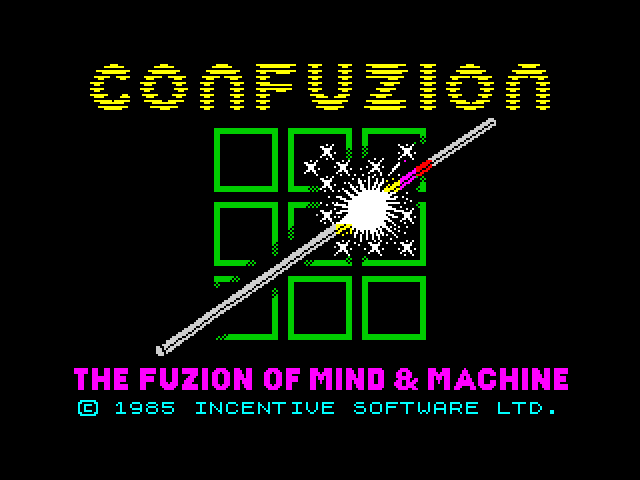Ok, I’ve committed to this now, no going back. I have chosen a game that both holds a lot of memories for me, has a significant place in my personal career history, and is (I hope) doable in the timeframe, which should help me to get some library code and assets in place that will make some of the harder games to come a little more feasible.
Incentive Software were my first employer, back in 1986, straight out of college. I still remember spotting the card in the Basingstoke job centre, yes we used the job centre back then, and immediately connecting the name to Confuzion, a game I’d purchased and played for hours just a year earlier on my rubber keyed Spectrum 48k (upgraded from 16k). Riding out to Tadley on my Suzuki GS125 for the interview. There will be more stories related to that part of my career during this challenge year.
Confuzion is a fun puzzle game by Brendan Kelly, Paul Shirley and Ian Andrew. A fun take on the classic sliding puzzle game, instead of sliding the pieces to recreate a static image, a spark travels on the traces of the board pieces, your job is to move the tiles into a configuration that takes the spark to its goal of igniting a bomb or bombs surrounding the board. Set over 64 levels, with increasing difficulty.
I have started by defining a configurable tile, with multiple elements, a base, the background and any number of layered images on top that represent the traces that the spark follows. This way I can make the variety of tiles required for the game from a small number of component parts, reducing the time spent on graphics, while making it easier to update those graphics later in the cycle, the fewer images there are, the quicker it is to redraw or improve them, especially with my limited artistic skill.
Each tile is defined by its trace layers and background image. As things progress, the tile definition will also include data used to move the spark along the traces as it enters each tile, but that’s still to come.
The board itself is the only other thing implemented so far, it is configured as a 2 dimensional array of integers, with each value representing a tile configuration. As a test, I’ve recreated the first level of the original game. Also implemented at this point, as you can see in the video below, is the simple tile animation. What you cannot see is that the board is configurable in width and height, data driven by the board configuration array. The animation is simple at the moment, but does the job.
Next up…the spark.


